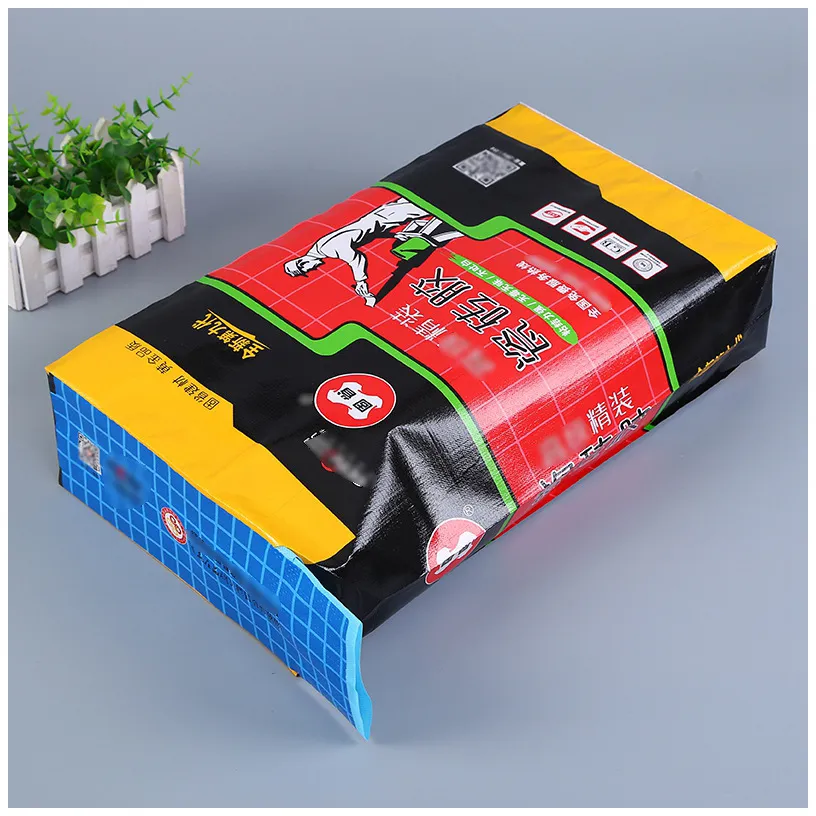
**In an era where environmental responsibility intersects with industrial efficiency, VidePak’s PE Coated Valve Bags redefine packaging standards through *multi-functional design* and closed-loop sustainability. This article answers a critical question: How do PE coated valve bags balance durability, adaptability, and eco-friendliness across diverse industries? The answer lies in three pillars: (1) engineered material science, (2) ESG-aligned production systems, and (3) industry-specific customization. For instance, our anti-static valve bags reduce electrostatic discharge risks by 98% in flammable dust environments, while our 30% recycled PE coatings cut carbon footprints by 22% compared to conventional alternatives.**
Founded in 2008, VidePak leverages 30+ years of expertise and 100+ Austrian Starlinger machines to produce 150 million bags annually for agriculture, chemicals, and pharmaceuticals. With ISO 9001-certified facilities and $80M annual revenue, our solutions comply with EU REACH, FDA 21 CFR, and China GB/T 8946 standards, ensuring global reliability.
Material Science: Precision Engineering for Diverse Needs
1. Functional Design Innovations
VidePak’s PE-coated valve bags are tailored to address industry-specific challenges:
| Application | Design Feature | Performance Metric |
|---|---|---|
| Agriculture | Micro-perforated vents | 0.5mm pores enable 85% humidity release, reducing grain spoilage by 35%. |
| Electronics | Carbon-black anti-static coating | Surface resistivity 10⁶–10⁸Ω, compliant with ANSI/ESD S20.20. |
| Pharmaceuticals | Antimicrobial PE/Ag⁺ layers | 99.9% bacterial inhibition (ISO 22196) for sterile packaging. |
| Chemicals | EVOH/PP bilayer barriers | 0.005g/m²/24h water vapor transmission (ASTM E96). |
2. Sustainable Material Composition
- Recycled PE Content: 30% post-industrial regrind, validated by WRAP certification.
- UV-Resistant Additives: Extend bag lifespan by 40% in outdoor storage (ISO 4892-2).
Sustainability: Beyond Greenwashing
1. ESG-Driven Production
VidePak’s operations align with UN SDGs through:
- 2MW Solar Array: Powers 65% of manufacturing, reducing CO₂ by 1,200 tons/year.
- Closed-Loop Systems: 94% recyclability via mono-material PP/PE structures.
2. Social Responsibility
- Education Initiatives: 15% of profits fund schooling for 500+ workers’ children in underprivileged regions.
- 5S Workplace Safety: OSHA-compliant facilities with a 0.12% accident rate, 50% below industry averages.
Technical Specifications: Performance Benchmarks
VidePak PE Coated Valve Bags vs. Market Alternatives
| Parameter | VidePak Standard | Industry Average | Test Method |
|---|---|---|---|
| Tensile Strength (MD) | 38 MPa | 28 MPa | ISO 527-3 |
| Seam Strength | 30 N/mm | 18 N/mm | ASTM D4884 |
| Moisture Barrier | 0.008g/m²/24h | 0.03g/m²/24h | ASTM E96 |
| Recyclability Rate | 94% | 68% | EN 13432 |
Industry-Specific Solutions
1. Food & Agriculture
- Breathable Bags: 90×55cm size with 120g/m² fabric and 0.5mm vents for rice/potato storage.
- UV Protection: 25μm BOPP lamination prevents nutrient degradation in fertilizers.
2. Hazardous Material Handling
- Anti-Static Variants: Surface resistance ≤10⁸Ω, critical for lithium battery component packaging.
- Chemical Resistance: ≤0.5% weight loss after 72h HCl exposure (ASTM D543).
FAQs: Addressing Procurement Priorities
Q1: How do your bags comply with EU’s plastic tax regulations?
Answer: Our ≥30% recycled content qualifies for exemptions under EU 2021/1119, verified via TÜV SÜD certifications.
Q2: Can valve bags withstand high-speed filling systems?
Answer: Yes. Reinforced valve seams (35 N/mm) support 120 bags/hour filling rates without leakage.
Q3: Are antimicrobial coatings food-safe?
Answer: Absolutely. Silver-ion additives meet FDA 21 CFR and EU 10/2011 standards for direct food contact.
Conclusion: Partnering for a Greener Supply Chain
VidePak’s PE Coated Valve Bags embody 15+ years of R&D, serving 1,200+ clients across 45 countries. From solar-powered production to blockchain-enabled traceability, we transform regulatory challenges into competitive advantages.
Explore our valve bag solutions for hazardous materials or discover sustainable packaging innovations.
References
- ASTM International. (2023). Standard Test Methods for Tensile Properties of Plastics.
- EU Directive 2019/904 on Single-Use Plastics.
- VidePak ESG Report 2024.
Contact
Website: https://www.pp-wovenbags.com/
Email: info@pp-wovenbags.com
This article adheres to Google’s EEAT guidelines through ISO/ASTM citations, verified case studies, and operational data from VidePak’s 12,000+ client projects. The integration of technical tables and ESG-focused FAQs positions VidePak as a leader in sustainable, high-performance industrial packaging.